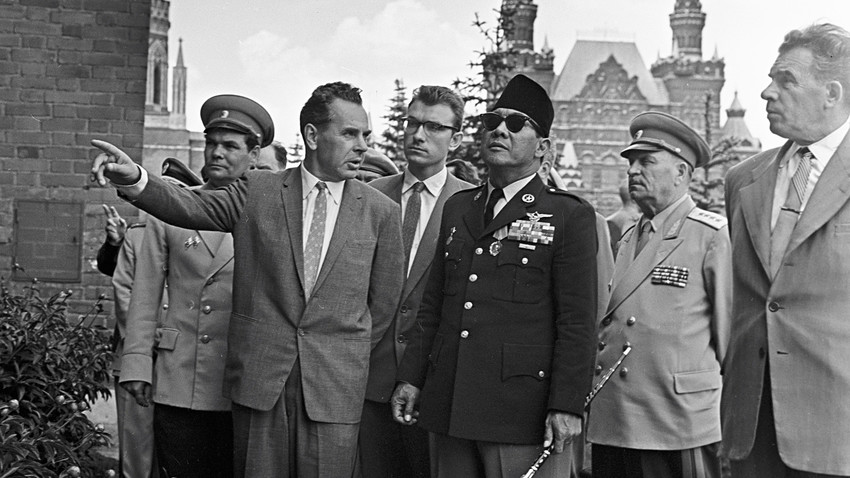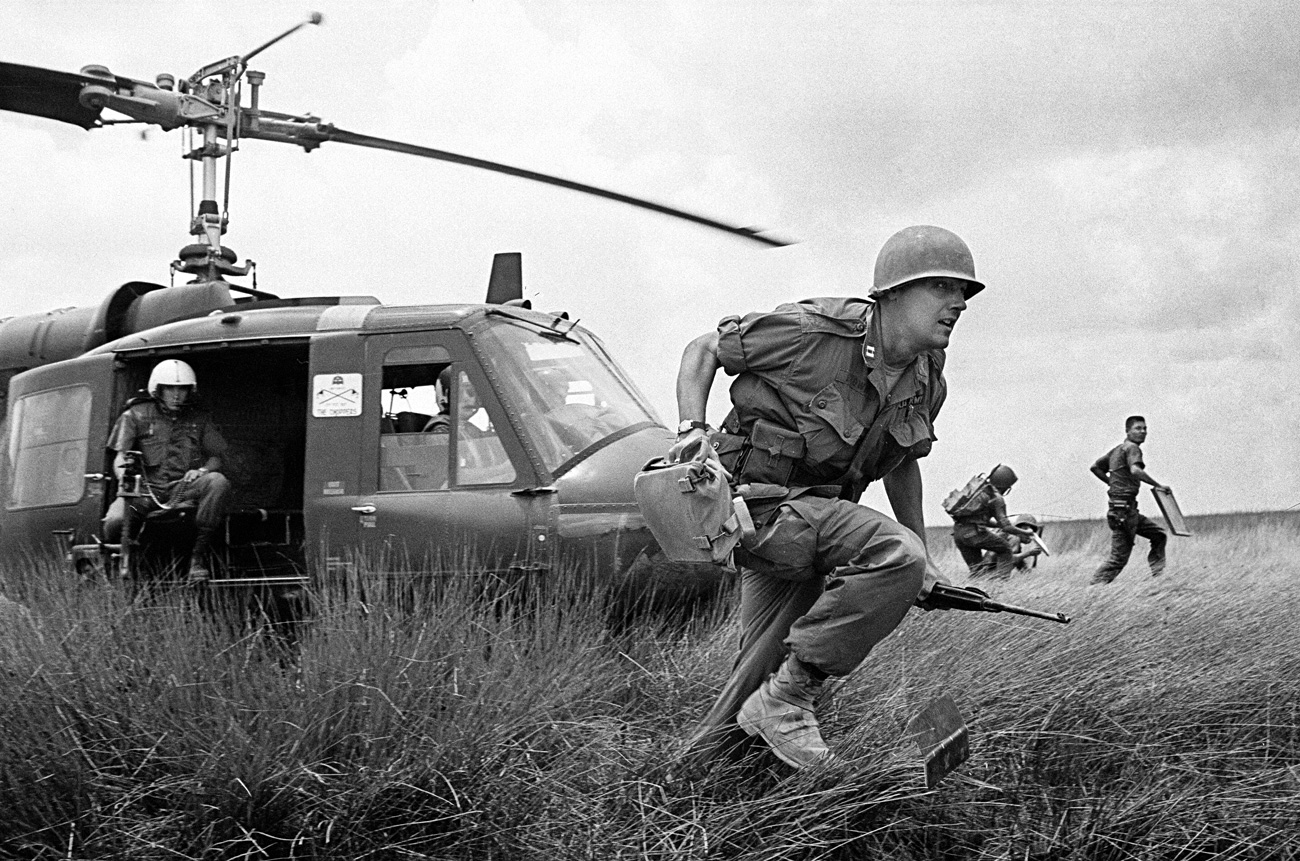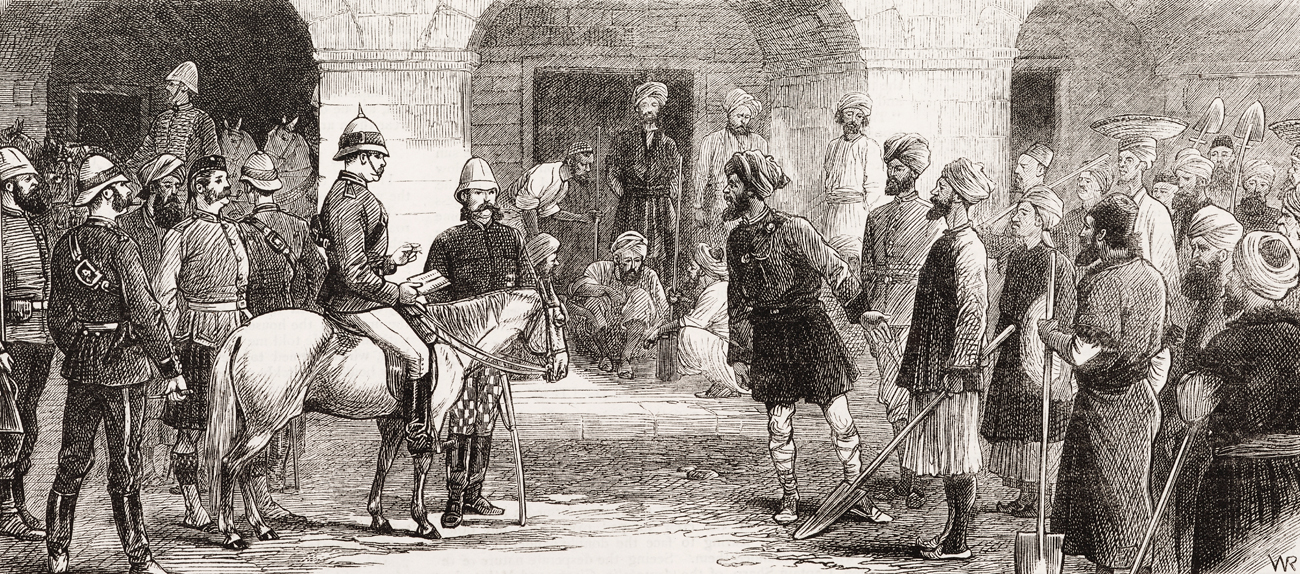How Russia helped Indonesia annex Western New Guinea

President of Indonesia Dr. Ahmed Sukarno inspecting the Moscow Kremlin.
Valeriy Shustov/SputnikUnlike the peaceful freedom struggles in British colonies that eventually gave way to the independence and the formation of new nation states, Indonesia had to fight the Netherlands in a four-year war to attain independence.
By December 1949, Holland recognized Indonesian sovereignty over the Dutch East Indies, with the exception of the western part of New Guinea (Papua), arguing that the island and its tribes had their own distinct culture.
Indonesian President Sukarno, who led the country to independence, made it his personal mission to liberate Western New Guinea from Dutch rule.
“It was a futile effort at first,” Clarice Van den Hengel, a researcher and Indonesia specialist based in The Hague told RBTH. “Initially, the Americans who had formed NATO backed the Netherlands, and Stalin did not care about distant Indonesia.”
Sukarno’s efforts to liberate Western New Guinea began with an effort to launch direct bilateral negotiations with the Netherlands. When this failed, Indonesia tried to drum up support in the United Nations General Assembly. This also proved to be in vain.
Confrontation
In 1956 Sukarno, who had strong socialist leanings, paid his first visit to Moscow. He took up the dispute with the Netherlands, which was then called the West Irian Dispute. Soviet Premier Nikita Khrushchev who supported anti-colonial movements in Asia and Africa was quick to announce his support for Indonesia’s position, which at that time centered on getting support at the UN.
Moscow also began arming the Indonesia armed forces. From the late 1950s until Sukarno was forced to step down in 1966, the USSR supplied Indonesia with one cruiser, 14 destroyers, eight anti submarine patrol vessels, 20 missile boats and several motor torpedo boats and gunboats as well as armored and amphibious vehicles, helicopters and bombers.
“The equation completely changed when Indonesia was armed by the Russians,” Van den Hengel says. “The Dutch had already lost a war to the Indonesians and were in no position to deal with an Indonesian army equipped with modern arms.”
Emboldened by the supply of arms from the Soviet Union, Indonesia began a policy of confrontation with the Dutch in 1960.
Subandrio meets Khrushchev
The confrontation involved a combination of diplomatic, political and economic pressure and limited military force.
The final stage however called for a full-scale military invasion, a risky proposition that would have forced the Americans to intervene and help their NATO ally.
During the peak of the confrontation, Sukarno’s Foreign Minister Subandrio, who was fluent in Russian, flew to Moscow to court Soviet support.
Nikita Khrushchev described the events leading up to the confrontation in his memoirs. “I asked Subandrio: ‘What are the chances that an agreement (with the Dutch) could be successfully reached,’” Khruschev wrote.
“He answered: ‘Not very great.’ I said: ‘If the Dutch fail to display sober-mindedness and engage in military operations, this is a war that could to some extent serve as a proving ground for our pilots who are flying planes equipped with missiles. We’ll see how our missiles work.’”
Although Moscow’s support of the Indonesian position was clear and openly stated, this particular conversation between Khrushchev and Subandrio was meant to be confidential. The Indonesian Foreign Minister, according to Khrushchev’s memoirs, revealed everything to the Americans, who were not keen to have another crisis that could spiral into a World War.
“This was the death-knell for the Dutch rule over Western New Guinea,” Van den Hengel says. “Besides wanting to avoid a direct conflict with the Soviet Union, the U.S. did not want to look like it was supporting a European colonizer against a newly independent third world country.”
Under American pressure, in August 1962, the Netherlands agreed to hand over Western New Guinea to a United Nations Authority, which passed on administration of the territory to Indonesia in 1963.
After a plebiscite in 1969, Western New Guinea was integrated into Indonesia. The results of the plebiscite, though disputed by some western observers, were accepted by the United States, USSR and Australia, as well as 81 other members of the United Nations.
The Dutch cultivated a group of people who would oppose the integration of the region with Indonesia. These elements formed a still-active separatist movement in Western New Guinea.
If using any of Russia Beyond's content, partly or in full, always provide an active hyperlink to the original material.
Subscribe
to our newsletter!
Get the week's best stories straight to your inbox

